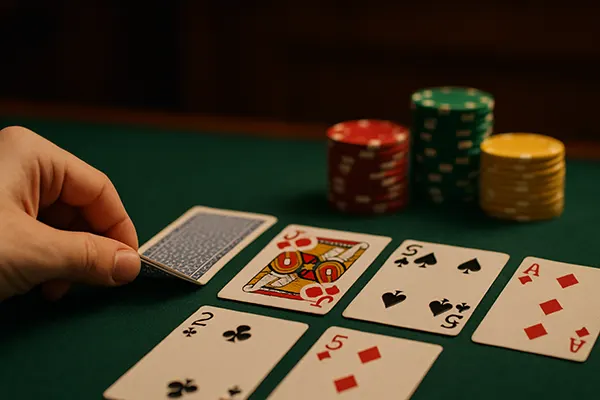Debunking Popular Myths About Baccarat: What’s Real and What’s Not

Baccarat has always sparked heated debates among gambling enthusiasts. Alongside real strategies and mathematical logic, the game has also become a magnet for myths that often mislead beginners and even some experienced players. In this article, we’ll take a closer look at the most common misconceptions about baccarat, separate fact from fiction, and examine what really matters when playing in 2025.
The Myth of the Dealer’s Unbeatable Advantage
One of the most persistent myths in baccarat is that the dealer always wins. While the banker bet indeed has a slight statistical edge, it does not guarantee constant victories. According to updated data as of June 2025, the house edge for the banker is approximately 1.06%, compared to 1.24% for the player. This marginal difference is the reason why betting on the banker is often advised by professionals. However, the outcome is still governed by randomness and strict game rules.
The game uses multiple decks of cards, and the results are determined by a set drawing mechanism that cannot be influenced once the cards are dealt. No dealer has control over how the cards are shuffled or drawn when the shoe is in use. That makes the assumption of an “unbeatable dealer” an emotional projection, not a statistical truth.
In short, while the banker side has a slight mathematical advantage, it does not make the dealer “invincible.” Losses and wins balance out over the long run due to the random nature of the game.
How the Odds Really Work
The core of baccarat’s odds is based on extensive probability models. The 1.06% house edge on banker bets is among the lowest in any game. That’s why many seasoned players rely on it. But no side of the table can change the fundamental probabilities, and that’s where the myth crumbles.
Understanding the math is key. A player who bets on banker every round will not always win — but in a very large sample of rounds, they are statistically more likely to have a smaller loss compared to those betting randomly or relying on “patterns.”
This knowledge offers a practical approach to the game rather than a false belief in “dealer dominance.”
Card Patterns and Superstitions
Another widespread myth is the belief that the layout or design of the cards somehow affects the outcome. This includes conspiracy theories about special patterns being linked to certain results or card faces being manipulated to favour the house. As of 2025, such claims remain unfounded and unsupported by any evidence from game regulators or developers.
In regulated settings, all decks are shuffled electronically or manually according to strict compliance procedures. Any variation in design is aesthetic only. Baccarat is not a game where card art influences gameplay in any way. Moreover, live dealer games are audited independently and use real-time streaming, which leaves no space for graphic manipulation.
What truly matters is the sequence of the cards and how it interacts with the drawing rules. The face or design printed on the card has no bearing on its value or how it’s dealt. This myth often stems from confusion or frustration after a loss.
The Psychology Behind the Myth
Believing in card patterns gives players a sense of control. After all, recognising shapes or faces seems like a skill — something humans are naturally inclined to do. But in baccarat, it has no bearing on the result.
Pattern-seeking behaviour is part of the gambler’s fallacy — a cognitive bias that leads one to see meaning where none exists. Instead of relying on logic or probability, players lean on superstition and intuition. That’s where dangerous misconceptions grow.
To make informed decisions, focus on real data: house edge, drawing rules, and bankroll management — not the art on the cards or illusions of hidden codes.

The Belief in Predictable Betting Series
Some players believe that baccarat results occur in repeating “series” or streaks, and that these streaks always end in a “balancing” outcome — such as alternating wins. For instance, if the player wins five times in a row, the next round “must” go to the banker. This line of thinking is statistically false.
Each round in baccarat is independent. The shoe does not remember previous results. While streaks and patterns can appear, they are random and not guaranteed to continue or reverse. Relying on them as a strategy can lead to faulty bets and losses.
Modern baccarat analytics confirm that long streaks are common but unpredictable. Believing that “a banker win is overdue” just because of recent player wins is a classic example of the gambler’s fallacy.
Reality of Game Independence
Professional players and statisticians agree: each hand in baccarat is separate from the one before. The game is not “due” to deliver any outcome. Patterns emerge retrospectively but are not predictive.
This misunderstanding often leads to risky betting tactics, such as the Martingale system, which can exhaust bankrolls quickly. Chasing a reversal is not a reliable approach and ignores the actual nature of the game’s randomness.
Instead, players should maintain discipline, manage risk per round, and avoid letting previous outcomes cloud judgment. No betting system can alter the odds embedded in the game’s structure.
